
70 minute read
NDTA Forum & Expo Wrap-Up
N e w F r o n t i e r s –N e w O p p o r t u n i t i e s
F O R U M & E X P O
Anchorage, Alaska September 22-26, 2012
NDTA would like to express sincere appreciation to the volunteers, attendees, program participants, exhibitors, and sponsors whose contributions helped make the 66th Annual Forum and Expo such a success!
Thank You!
Thank you to Supreme Group USA, LL C for hosting the Forum Professional Program.
Remarks from Keynote and Featured Speakers are abbreviated. Please login to the NDTA website (www.ndtahq.com) to view complete videos of each speech, in addition to breakout session presentations.
>> The Forum DTJ “Flip Book” is online (see DTJ archives) >> Plus, check out photos on the NDTA website and on our Facebook page
The DTJ Wrap-Up is brought to you by the NDTA Forum Press Team: • Jeff Campbell • Kent Gourdin • Donna Johnson • Sharon Lo • Mike McVeigh • Bob Reilly • Jann Sherrill • Brian Tracy
The NDTA press team works before, during and after the Forum to provide coverage of the speakers, panels, and events of the week. They conduct interviews and prepare notes that are used to provide accurate, educational information for NDTA members. Thank you press team!
Find Even More Forum Resources Online
Login to the members’ section of the NDTA website to view Forum Presentation Materials, including session presentations, speaker bios and videos.
1-800-PACK-RAT ABF Freight System, Inc. AIT Worldwide Logistics, Inc. Alaska Air Cargo/Alaska Airline Alaska Veterans Museum Allswell Supply Company Apex Logistics Group APL Limited ARC Atlas Air/Panalpina Avis Budget Group Bennett Best Western International Blkbird, Inc. Boyle Transportation C. L. Services, Inc. CAKEBOXX TECHNOLOGI ES Carlile Transportation Systems Central Gulf Lines, Inc. Chapman Freeborn Airchartering Choice Hotels International Citi Colorado Technical University Coyne Airways Crowley Maritime Corporation Damco DB Schenker DEFENSE LOGIS TICS AGENCY DHL Dollar Thrifty Automotive Group Echo Logistics Erudite, Inc. Farrell Lines exhibit ors
FEDEX Final Mile Logistics General Dynamics GlobalTrak Greatwide Truckload Management Hanjin Intermodal America Hapag-Lloyd USA, LL C He rt z Corporat ion Hilton Worldwide Horizon Lines, LL C InterContinental Hotels Group (IHG ) J B Hunt Transport, Inc. JAS Forwarding Kalitta Charters, LL C Krown1 FZC Landstar System, Inc. Lockheed Martin Lynden M-Pak, Inc. Maersk Line, Limited Marriott International Matson Logistics/Navigation Medallion Transport & Logistics, LL C Mercer Transportation Co. Naniq Global Logistics, LL C. National Air Cargo NAVS UP Business Systems Center NDTA North Pole Chapter NDTA Headquarters Panther Expedited Services, Inc. PD TIS and PD J-AIT Pilot Freight Services PODS Enterprises, Inc. Port of Port Arthur Port of San Diego Portus Priority Solutions International Professional Home Staging and Design R&R Trucking Radiant Logistics Partners LL C Raith – CTS Logistics Sealed Air Corporation SEKO Worldwide SkyBitz Sourdough Express Inc. Supreme Group USA, LL C The Pasha Group The Port of Virginia/Virginia International Terminals Total Quality Logistics Totem Ocean Trailer Express Transgroup Worldwide Logistics, Inc. Tri-State Motor Transit Co. Tucker Company Worldwide U.S. Bank US Department of Transportation - Maritime Administration US General Services Administration United Seamen’s Service Universal Truckload Services Inc. UPS UTi, Worldwide (Aerospace and Defense Group) Vietnam Graffiti Project Women In Trucking Association, Inc. Worldwide Aeros Corp
AAT Carriers, Inc. ABF Freight System, Inc. Alaska Air Cargo/Alaska Airlines Allswell Supply Company APL Limited Avis Budget Group Baggett Transportation Best Western International Chalich Trucking Choice Hotels International DHL Echo Global Logistics FEDEX Final Mile Logistics spon sors
FMN Logistics He rt z Corporat ion InterContinental Hotels Group (IHG ) Landstar System, Inc. Lockheed Martin Maersk Line Limited National Air Cargo Omega World Travel The Pasha Group Port of Anchorage Port of Port Arthur R & R Trucking Red Prairie Corporation Rentacrate
Ridgeway International USA, Inc. SAIC Southwest Airlines Supreme Group USA, LL C Tennessee Steel Haulers, Inc. Teradata Corporation Totem Ocean Trailer Express Transportation Institute Truva International Transportation & Logistics Universal Truckload Services, Inc. UPS UTi Worldwide Vietnam Graffiti Project
The Honorable Alan Estevez Assistant Secretary of Defense (Logistics & Materiel Readiness)
Mr. Estevez opened his presentation with recognition of the military, civilian workforce and industry partners, all of whom did stellar jobs in support of our efforts in Iraq and Afghanistan. All provided key support in front-end deployment, sustainment, and eventual redeployment and retrograde. These parties have also been crucial in standing up the Northern Distribution Network (NDN), addressing ongoing logistical challenges, and the handling of supplies with closeout of the NDN pipeline.
He continued his opening remarks by reminding everyone that while we are moving into a new phase, our nation is still at war in Afghanistan, and all discussions need to be in perspective with this reality.
Mr. Estevez recalled his presentation at last year’s NDTA Forum in Phoenix which he titled, “The Good, The Bad and The Ugly.” He offered some of the changes within the DOD since his Phoenix presentation, including: • Budget –developed strategy with consideration that there would be a downsizing of the war effort in Afghanistan and withdrawal from Iraq • Pivot with new focus on the Pacific, with associated budgetary impact • Smaller force presence –more lean, more agile
The impending threat of sequestration resulted from 2012 debt ceiling deal, which cut $1 trillion in government spending over the next ten years. Congress was tasked with finding another $1.2 trillion. However, Congress did not agree on the formula of lower spending and higher taxes to achieve the goal, resulting in a mechanism in the debt ceiling-raising legislation which causes automatic spending decreases to hit the $1.2 trillion figure; about $109 billion in lower spending each year for the next ten years. Mr. Estevez was clear in suggesting this model was not a very good plan or situation for the US, and specifically the US Military and Defense infrastructure.
No action regarding sequestration was set to take place until after the elections. Sequestration will take effect unless a change occurs during the lame duck session. Mr. Estevez closed his comments on sequestration and the budget stating that “this is a very confusing situation, especially under the current continuing resolution over the next six months.”
Mr. Estevez then provided an update to what was being worked on by the Acquisitions, Technology & Logistics (AT&L) Offices. In order, the priority focus areas are: • Supporting forces • Improving affordability ofacquisitions • Workforce • Industrial base
In terms of supporting the forces, while Mr. Estevez praised the “spectacular logistics activity” being performed, several challenges to the drawdown in Iraq still exist. These include: • Inventory management • Identification ofmateriel to unit level • Retrograde –determining what should remain, what should move • Forward logistics to Afghanistan, other theatres We have a lot of equipment that we need to get rid of and we need to make hard decisions as to what to do with all of it. The donation of equipment in Afghanistan is difficult, and due to their financial situation, materiel acquisition is especially challenging. These commodities include: MRAPS, Hummers, SUV’s, laptops, generators, and monitors, to name a few. Fuel acquisition continues to be one of the biggest concerns, now and into the future.
An initiative being taken to improve the efficiency and affordability of our acquisitions is the Better Buying Power program. This involves taking a closer look at acquisitions and what we are buying. When new gear is purchased, whether or not we can afford to purchase it will be examined, in addition to looking at whether or not the equipment will be affordable throughout the entire lifecycle. All purchases are being scrutinized by AQ because they cannot afford to buy anything that is not going to last.
Mr. Estevez continued by discussing occupations of service, which include transportation, repair, and base maintenance. Each Service has an acquisition specialist. Current procurement scrutiny measures are under review and stronger performance metrics are needed. To meet these needs a peer review of best practices and value is being performed. They are also looking at small business goals and objectives, with the foremost objective being innovation.
Finally, Mr. Estevez addressed AT&L’s focus on the industrial base. The main point in question being what the industrial base will look like in the future, with troops drawing down, less materiel movement, and focus shifting towards the Pacific. In response to these shifts, AT& L is looking intently at the future of Airlift and Sealift. A question and answer period followed Mr. Estevez’s speech. The first question


was whether or not the military services would be bringing more repair and maintenance processes in-house? To this, Mr. Estevez responded that no plans to do so existed. One objective in the FAR-Based contract environment is better 2nd, 3rd tier controls on sub-contractors and related compliance. The next question asked was how the drawdown would impact our overall defense? Mr. Estevez responded that under 100,000 contractors remained in theatre. Many would drawdown with troop withdrawal, others may actually take on a more active role and responsibility.
featu red Spea ker | Open in g Cerem on y
MG Roger Mathews, USA Deputy Commander US Army Pacific (USARPAC)
Following the Forum Keynote, NDTA got an introduction to the area highlighted in the Defense Strategic Guidance courtesy of MG Roger Mathews. The General began with a short video introduction asking “who and what is USARPAC?” Bottom line: 115,000 soldiers have deployed for continuing missions since 2001. The Nation’s eye is on Asia-Pacific and USARPAC stands ready. This being his first Forum, MG Mathews quickly found himself among friends from around the Services, and on behalf of USARPAC Commanding General LTG Frank Wiercinski, he thanked attendees, who “represent the organizations and the capabilities essential for what we do in the Pacific.”
USARPAC covers half the world’s surface. While people traditionally think of the Pacific as a Naval Theater, nobody lives on the water; seven of the world’s ten largest armies are found in the region, so land power is credible and relevant across the AOR. MG Mathews continued that “our goal across the region is to promote security and stability.”
Fiscal Year 2011 included more than 130 engagements in 34 countries of enhanced relationships and partnership building. This year, USARPAC is on track for 144 such engagements. “Unique to the PACIFIC AOR, the USARPAC Commander is also responsible for homeland defense in the AOR.”
Today, almost 10,000 USARPAC soldiers are deployed in support of overseas contingency and combat operations outside the AOR, such as in Afghanistan. “Thankfully, nowhere is it more evident than the Asia Pacific Region that our Nation’s military, civilian sustainment, transportation and logistical capabilities are present and hard at work,” he said. “Using these assets is how USARPAC sets the theater of operations to conduct large scale land operations, and it is truly impressive.” General Mathews noted that partner nations are always interested in how USARPAC is able to produce a wide range of logistics support while spending resources are coming down in our homeland and theirs. The answer, he said, lies in USARPAC’s structure, processes, and the depth of capabilities the US Army brings to the region. Every three days, this region has a natural disaster or event that costs human lives or life-changing property damage. A significant amount of USARPAC exercises and exchanges are tailored toward humanitarian assistance and disaster relief, making them Mathews said, a focal point of USARPAC’s partnership program. That same day as logistics and transportation professionals from around the world listened to MG Mathews in Anchorage, his soldiers were in Bangladesh participating in a disaster preparedness exercise, learning how to work with partners in the aftermath of an earthquake.
While Defense spending cuts loomed, MG Mathews noted the importance of using capabilities efficiently and wisely, for “We will really never have enough if we don’t use it wisely,” he noted in regards to strategic theater lift.
“As the world has become more interconnected, we have learned some valuable lessons,” he said. “We have learned that we are all logisticians by necessity.” MG Mathews called logistics the “long pole in the tent,” saying sustainment plans cannot be integrated after operations plans are developed. Learned sustainment imperatives include: • Plans must be adaptable and flexible enough to respond to unforeseen and foreseen crises. • Continue to adapt a network planning approach, ensuring efforts at service component level mesh with combatant command level planning efforts and global distribution campaign plans. • Geographic posture—forward presence of equipment—and in some cases relief supplies—must be in place and ready to react when unforeseen needs occur. • Organize sustainment forces in right quantity and component mix to meet missions across entire spectrum of challenges when conflict arises.
All of this, MG Mathews says must be done in a strategic environment where the Army is getting smaller while demands across the spectrum are increasing.
With that, MG Mathews proceeded into the question and answer period. The first question was about potential basing opportunities in Australia. MG Mathews said USARPAC is looking at pre-positioning equipment and rotating forces that would work in a connected distributed manner, but not looking at basing forces in Australia. He noted that our partner nations are buying our equipment so their equipment speaks the same language as ours. Another attendee asked about the changing number of forces locating to Guam. MG Mathews said plans are in the neighborhood of 5,000 Marines moving to Guam and possibly Hawaii. Since Guam is a huge transportation hub, he is also interested in potential protection requirements such as missile defense.
featu red Spea ker milita ry un it awa rd s Cerem on y
RADM Mark Buzby, USN Commander Military Sealift Command (MSC)
Rear Admiral Mark Buzby presided over the Military Unit Awards Ceremony which honored 10 outstanding units from the Army, National Guard, Marine Corps, Navy, Air Force and Coast Guard, both active and reserve. RADM Buzby informed audience members that NDTA has been honoring out-
standing units of all services since 1966, with each unit being selected for the honor by its respective service.
Sighting their accomplishments and those of all logisticians around the globe, Admiral Buzby stated that we are “ready, able and successful” in such varied crisis from Iraq and Afghanistan to relief for hurricanes, the earthquake and tsunami in Japan, and Utuk, Alaska.
He continued that these 10 units are just the “tip of the iceberg”, in representing all the logisticians in all services who make sure that our military, civilians, and those in need receive what they need when they need it. You can’t see the rest of the iceberg, imagine all those you can’t see doing their jobs. We honor all of them by focusing on the best of the best. The people and units we honor have uniquely different methods but their common focus is supporting the warfighter any way they can.
featu red Spea ker
Maj Gen Peter Talleri, USMC Commander Marine Corps Bases Pacific
Maj Gen Peter Talleri presented Forum attendees with a terrific update on USMC activities in the Pacific. He began by noting the strategic shift in DOD focus back to the Pacific arena where the Marines have had a presence since World War II. Since that time, they have worked on building relationships with local nationals, by providing aid in areas such as construction, medical care, and dental care. These programs instill friendship and commitment between the locals and US Armed Forces. Currently, the Marines are drawing down troops from 202,000 to 180,000. Despite fewer troops, they are still task oriented, scalable and adaptable. Through over 65 exercises per year, including exercises with allies such as Thailand, Australia and Japan to name a few, the Marines are a powerful, capable, well prepared force able to respond to a crisis fast.
Since 2004 the Marines in the Pacific have responded to 13 disasters, the most recent being the Japanese earthquake, tsunami, and nuclear crisis. Due to preparations for an exercise with a tsunami scenario, the Marines were able to immediately deploy, delivering thousands of pounds of relief supplies by sea and by land. When their help was no longer needed, they redeployed just as rapidly.
Maj Gen Talleri continued that the Marines are constantly preparing for new frontiers by taking advantage of each new opportunity as it presents itself. He discussed plans for establishing a rotational force in Darwin, Australia, starting with 200 people on six month rotations increasing to 2500 people by 2014. Though there will be challenges associated with strategic and intra-theater transportation support of this location, Maj Gen Talleri suggested that High Speed vessels might be an attractive option for the latter. He also mentioned the importance of leveraging industry partnerships to obtain requisite levels of transportation and IT support for intransit visibility.
MG Talleri continued his presentation by stating that the situation regarding Guam had changed. The original plan was to station 8000 there, but the local infrastructure simply could not support that number of people. The Marines are presently rotating forces in from CONUS on six month deployments, and are considering a final number closer to 5,000. He went on to express some concerns about the West Coast ports’ ability to support deployments into both Darwin and Guam.
VADM Mark Harnitchek, USN Director Defense Logistics Agency (DLA)
VADM Mark Hanitchek began his presentation by thanking the men and women in uniform, in industry, and civilians for their responsiveness to the DOD over the past ten years, referencing a fireside chat by President Roosevelt, he called them the “arsenal of democracy.” The Admiral then moved into discussing DLA’s current status, stating that it had one of its biggest years with $40 billion dollars sold through August and that the agency had doubled in size since 9/11. DLA sales include fuel (half of sales), food, pharmaceuticals, construction equipment, uniforms, etc. Like most big logistics agencies, DLA is a working capital fund, using revolving fund money to make lead time investments in things. Customers then requisition the materiel, pay for it, which DLA uses to pay suppliers. Approximately 14% is added to the cost which is used as DLA’s operation budget.
With reference to the PACGLOC closure, VADM Harnitchek stated that during the closure there was more food and supplies on the ground than ever before. The Admiral called DLA a “big logistics animal,” adding that there is almost no challenge it cannot meet.
Switching gears, the Admiral stated that there would be a new subsistence prime vendor in Afghanistan this year, which would be a challenge he was looking forward to meeting. The next challenge for DLA would be retrograde—how to get everything out of the AOR, ship it, dispose of
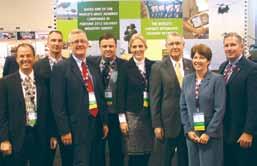

it, give it away, etc. Again, the Admiral had no doubts as to DLA’s abilities to complete this task. DLA also remains ready to respond to any contingency that may pop up. DLA has evolved since it was first stood up in 1964, with missions being added to their AOR from the Services, and as a result of base realignment and closures. One example of this is DLA’s retail support (supply, storage and distribution) at service industrial sites, which had traditionally been part of the Services’ missions. Their missions have truly become end-to-end. One major challenge that has come up over more recent years is the need to combat the entrance of counterfeit parts into DLA’s supply chain.
Regarding the new defense strategy, DLA has learned how to work long haul stability operations. Being a smaller force means knowing how to engage, disengage, regenerate forces and send them to the next contingency. DLA is also focusing on finding low cost, smaller footprint machinery to help achieve our National security objectives, such as unmanned aircraft. The strategy is partnered with new budget constraints across the department. What this ultimately means for DLA is getting the same effect for the warfighter at the same or a reduced cost.
Looking at the supply chains into Afghanistan, VADM Harnitchek stated that they were not “just a little commercial,” but that rather, they were entirely commercial. Other than air support provided by the Air Mobility Command, all of the movement on the ground was completely provided by commercial partners, which he concluded would most likely be the way of the future. Describing its response to budget cuts, the Admiral described DLA’s plan to make greater cuts than what had been asked of it. DLA planned to reduce its budget by 10% over the next five years. This money would be given back to the Services. The Admiral’s goal is to have better performance at a reduced cost. To do this the Admiral has asked his team to really determine the necessity of each item purchased, in addition to disposing of excess inventory to reduce storage costs and infrastructure footprint. Industry stores food, pharmaceuticals, and fuel for DLA, and the Admiral felt there was room to expand this. Reverse auctions for business is another way to increase competition and ultimately save money. He further suggested that DLA needed to take a harder look at its fuel storage and usage. DLA is also working to become “audit ready” and to exemplify excellence in inventory management.
DLA is looking forward and has already begun to work on meeting the future requirements of the department. They are forging strong partnerships with USTRANSCOM and industry, and have found ways to meet ever changing needs from war to humanitarian efforts around the world. In closing, the Admiral stated that it was a great time to be in the DOD because we are doing greater things than ever before.
featu red Spea ker
CDR James Kriner, USN CCJ3-S Strategic Deployments US Central Command (USCENTCOM)
Commander James Kriner provided a detailed overview for Forum attendees of what CCJ3-S actually does. This includes the planning, synchronization and prioritization of the deployment of all forces into and out of USCENTCOM AOR. He covered the Retrograde Process 101 which is being used to identify, clean, inspect, process for transport, decide the proper mode based on priority and allocation, and move the cargo. CDR Kriner defined retrograde as unit equipment that is no longer on the property books.
CDR Kriner then compared OEF lines of communication from 2008 to today. Through this comparison lessons learned can be identified to increase effectiveness going forward. The Commander presented the numerous new Lines of Communication in the AOR that are “redundant, flexible, with no single point of failure.”
Getting retrograde equipment back to the US is a monumental task. Retrograde seaports include Charleston, Jacksonville, Wilmington, Beaumont, and San Diego, and retrograde airports are located in Dover and Charleston. The final destinations for the materiel are in GA, CA, PA, OR, TX, SC, WI, MS, and NC. Monthly Retrograde goals for Rolling Stock (RS) are 1,200 pieces per month and 1,000 pieces per month for Non-Rolling Stock (NRS). The process is being guided along by a network of multi-national partners, these include: • Dubai Multimodal –200 Pieces RS/200 Pieces NRS • Jordan Multimodal –50 Pieces RS/50 Pieces NRS • Russian Route –200 Pieces RS/200 Pieces NRS • Kazakhstan, Kyrgyzstan, Tajikistan (KKT) Route –100 Pieces NRS • Pakistan GLOC –Remaining eligible RS and NRS
USCENTCOM and USFOR-A continue to plan and determine the force structure in Afghanistan post 2013. CDR Kriner explained that they intend to maintain maximum flexibility by maintaining the multiple Lines of Communication. The Command is being faced with new frontiers as it moves materiel back to the CONUS and new opportunities as it looks towards the Pacific. When asked what percentage of retrograde would be returned by air, CDR Kriner responded that direct air will not be used for retrograde unless it contains a high priority. USCENTCOM will look at policy and best practices to make such determinations.
featu red Spea ker
Lt. Gen Brooks Bash, USAF Director for Logistics, J-4 The Joint Staff
Lt Gen Bash began by telling the audience about his upbringing as a child living in a remote, rural environment, where he was no stranger to the use of firewood as a dependable fuel source. In recent years, he learned how significant the economics and logistics of firewood supply is as a critical fuel in Afghanistan. This particular challenge of ensuring firewood fuel supply throughout the country of Afghanistan continues to be a key topic of discussion within the DOD.
General Bash continued that, in his opinion, transportation and logistics mobility is the primary element for our military success. Key to this is examining the strategic direction and foundation of how we do our business.
General Bash identified “business that we have to get right,“ including the shift from Afghanistan to daunting challenges in the pacific, as well as the logistics prospective for that shift. General Bash explained that the Joint Staff must consider access importance, airlift and sealift ability, petroleum, and partnership capacity. General Bash then addressed readiness and the Joint Logistics Enterprise. Readiness included finding out what we have, determining if it is needed (SORTS), Guard/Reserve readiness, the JLRDB –Joint Logistics Readiness Dash Board, and critical capabilities with Command plans and risk assessments. With regard to the Joint Logistics Enterprise, General Bash said failure was not an option and that hot spots must be identified in case it became necessary to act on short notice. The Joint Force is regionally oriented, selectively Independent, and must be capable of rapid redeployment. “There’s a basic assumption globally that we will be ready, but that is not always the case, especially in light of joint logistics coordination.”
General Bash next discussed operational energy and the challenge presented by keeping up with the fuel supply in Afghanistan. He estimated that the Joint Force’s gallons of fuel used per day is approximately $23 per solider. Access (physical, cyber, relationship visibility) and communication were important aspects of combating this challenge.
The Joint Force understands the necessity of partnerships in what they do. They dependend upon commercial partners. They must consider responsiveness, the capacity of commercial partners, and monitor these areas. It is important to understand the dependence they have.
Moving forward the Joint Staff is looking at the transition from high tempo and uncertainty of where the next crisis will be. There is great reliance on joint logistic preparedness and necessity of being ready when needed. When asked how we are we doing with capabilities and capacity, General Bash responded that we are looking at it strategically, how we fight across the world. Logistics tension was noticed and the need to share resources, appropriation among Services was identified. In reference to Inland petroleum capability and readiness, General Bash said that joint capability is making good progress.
featu red Spea ker
Gen William Fraser, USAF Commander US Transportation Command (USTRANSCOM)
General William Fraser opened his comments by discussing the value of the NDTA Forum and the opportunity it provides for members of the military, civilian, and industry partnership to meet. The ability of this partnership to learn and adapt has granted the department many successes in theatres that it never anticipated serving. As the world continues to present challenges such as humanitarian relief or other crises around the world, the General was confident that together we would deliver.
General Fraser continued that USTRANSCOM’s missions are vast because of the global nature of the command and he reiterated that USTRANSCOM could not meet these challenges without its commercial partners. He also stated how proud he was to represent the hardworking men and women USTRANSCOM. At the end of last year, when it became obvious that they would need to accelerate the withdrawl of troops from Iraq, this team was able to meet the demands of our military, accomplishing the mission safely, effectively and on-time. Another example occurred in July when Pakistan re-opened the PAKGLOC. USTRANSCOM did not receive advance warning of this occurring and immediately upon the news breaking, the General began to receive calls from industry asking how they could help.
General Fraser stated that we are now at a strategic turning point, as the wars recede, we are still facing a range of security challenges which threaten our national security, as exemplified by recent attacks on US Embassies in Libya, Egypt, Yemen, and other hot spots around the globe. Further threats are found in recent aggressive military modernization efforts across Asia and growing threats of cyber-intrusion. We must plan for these attacks while maintaining full support to troops on the ground in Afghanistan. USTRANCOM remains on the leading edge of protecting its networks, due to its status as one of the most attacked organizations. In 2011, it had over 45,000 attacks to its network.
As the strategic shift to the Pacific occurs, USTRANSCOM is finding its re-balancing in the most efficient and effective manner possible. This entails working with partners in the Asia-Pacific and also continuing efforts with industry partners. While there were certainly new frontiers being forged, Gen Fraser also made mention of potential opportunities in the Pacific. As a part of its re-balance and at the direction of the department, USTRANSCOM is looking to develop a global campaign plan for distribution, which will examine USTRANCOM’s ability to support theatre campaign plans in all geographic combatant commands, with attention to the resources needed and risks associated. This will ensure the enterprise remains vibrant across the globe. The plan will be collaborative and must incorporate industry. The goal is to have this plan completed in 2013.
General Fraser next spoke about USTRANCOM’s requirement to reduce the deficit budget, stating that USTANSCOM would have to be “smaller, leaner
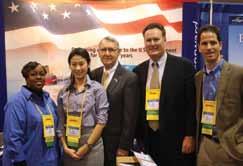
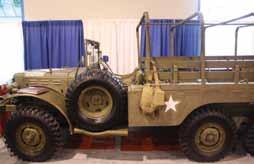

and at the same time we have to remain ready, agile, quickly deployable and flexible because we don’t know where the next call is going to come from.” General Fraser acknowleged that there existed some unknowns with regard to what budget cuts would mean for the department and to industry, but he felt that with industry support USTRANSCOM would be well equipped to posture itself for the future. Positioning the command for the future has required leaders at USTRANSCOM to be thoughtful and deliberate in their actions. To this end, USTRANSCOM has embarked upon the process of creating a new comprehensive and collaborative five year plan. The plan looks at what USTRANSCOM does, how it does it, and a strategy to make the processes, structure, and culture of USTRANSCOM more effective. The goals of the command’s strategy are to: • Preserve readiness capability, within fiscal restraints • Achieve IT management excellence • Align resources and processes for success • Deliver customer focused professionals to satisfy customer requirements. With help from all in the partnership and with the implementation of this new strategy, USTRANSCOM will continue to provide crucial operations when the calls come in.
featu red Spea ker
Gen Raymond Johns, Jr., USAF Commander Air Mobility Command (AMC)
General Raymond Johns opened by stating that “it is all about relationships.” He explained that over the years AMC and the military have gone through contingencies that while different, are similar to what we face today on many levels. While many feel apprehensive about how to handle today’s challenges, Gen Johns recommended responding by “releasing your people”—for him this means his airmen, for others this means soldiers or employees. Provide inspiration to these people to move forward and trust them. They will make mistakes, but we need to help them keep moving forward. He further stated that we answer the call of others so they may prevail.
Throughout his speech Gen Johns provided examples of past successes by looking at the initial challenges and how people responded leading to the ultimate achievement. He explained that in some cases leadership makes it difficult on their own people, but that leaders need to look at what they are reinforcing. Instead of questioning their people, leaders should support them. Some of what we all do is for the greater good and sometimes, it is for one person. Gen Johns continued that there are no “redos” in this business, good is not good enough. One person can make a difference, we need to challenge the system, innovate, if leaders just trust their people and release them, those individuals can make a difference.
U.S. Government travelers know nothing beats a great deal.
We know you recognize great travel deals, so we’re giving you a free single upgrade on future rentals. That’s on top of your member discount of up to 20% off when you use BCD # T788300. It’s easy to save with reusable savings and discounts like these.


Visit budget.com or call 1-800-BUDGET-7 to make your reservations.
Free Single Upgrade
CoUpon # UUGZ055
Terms and Conditions: Coupon valid for a one time, one car group upgrade on a compact (group B) through a full-size four-door (group E) car. Maximum upgrade to premium (group G). The upgraded car is subject to vehicle availability at the time of rental and may not be available on some rates at some times. Coupon valid at participating Budget locations in the contiguous U.S. One coupon per rental. A 24-hour advance reservation is required. May not be used in conjunction with any other coupon, promotion or offer except your member discount. For reservations made on budget.com, upgrade will be applied at time of rental. Renter must meet Budget age, driver and credit requirements. Minimum age may vary by location. Fuel charges are extra. Rental must begin by 6/30/13.
An Inte ra genc y Tran sportat ion Perspect ive Inc lud in g DOD Oversea s Ope rat ion s
Moderator: Don Stanton, Deputy Assistant Secretary of Defense for Transportation Policy
Panelists: BG Lewis Roach, USA (Ret.), Deputy Dir., Policy & Planning, US Customs & Border Protection, DHS Joel Szabat, Interim Exec. Dir., MARAD, Deputy Assistant Secretary for Transportation Policy, DOT COL Mike Cashner, USA, Assistant for Deployment & Distribution, Transportation Policy, OSD
Mr. Stanton began by updating attendees on what his office had been working on, including work with the National Transportation Safety Board (NTSB) and DOT. Mr. Stanton explained that his office had been focusing on bringing together interagency support for the warfighter.
He continued that the new strategic guidance had placed emphasis on the Pacific, Asia, and the Middle East. The key to this is to get the right mix of logistics assets and capabilities in place, but to do so within current fiscal realities in order to provide best efficiencies and value for agencies, and ultimately the taxpayer.
Mr. Stanton next asked the audience if they had heard the term “whole of government,” which he explained meant integrated government participation. In other words, “whole of government” means trying to find ways to increase cost savings, collaboration, and to avoid duplicating efforts. He also acknowledged that working in interagency environments is not easy due to differences between agencies’ terminology, processes, etc. COL Cashner reinforced the importance of inter-organizational coordination, noting that Joint Publication One now requires it as doctrine. He also mentioned three lessons learned from the reopening of the Pakistan GLOC: where you stand de
pends on where you sit, my bureaucracy is bigger than your bureaucracy, and industry is almost always faster than government. BG Roach mentioned that IT and information exchange are essential to meeting present and future threats. Mr. Szabat discussed the Maritime Security, Ready Reserve Fleet, and VISA programs within the context of interagency cooperation. He stated that the more government agencies involved in a process, the harder issue resolution becomes.
A question from the audience regarding efforts to streamline inter-agency FAR contracting sparked some discussion. The answer provided was that this process still needs work. Funding is a big impediment to interagency cooperation, as is the lack of understanding about where the “other guy” is coming from in these relationships. In fact, DHS really has no external logistics focus yet. The overall takeaway from this session to attendees was that internal and external collaboration is essential if the DOD is to achieve efficiency and best value in transportation.
The Se rvice Cont ract Act – Imp lica t ion s f or Government Cont ract ors
Moderator: William Brooks, Sr. Policy Advisor, Branch of Gov’t Contracts Enforcement, Wage & Hour Division, DOL U STRANSCOM is transitioning from tenders to FAR based contracts. Clauses in FAR based contracts require adherence to the SCA. Contractors who do not comply with SCA risk severe penalties—large fines and/or debarment from government contracts. Representatives from the US Department of Labor’s Wage and Hour Division will provide compliance assistance training regarding the SCA prevailing wage and fringe benefit requirements that are being applied to USTRANSCOM’s FAR based transportation contracts.
The Service Contract Act requires hourly wages plus benefits to be incorporated into all government service contracts. These wages and benefits become a part of the Wage Determination (WD). In addition, contractors are responsible for their own record keeping, as well as that of their subcontractors. A contractor can be penalized for sub contractor’s noncompliance with the SCA rules.
Many contractors have drivers who are paid by the mile. The issue was raised how to convert miles to hourly wage and benefits. Is there a formula? No direct answer was given.
Bona Fide Collective Bargaining Agreements with subcontractors can supersede the SCA. They become a part of the WD. They must be in place before the contractor bids on a government contract. This could be a solution for contractors who have a lot of independent owner operators or a lot of subcontractors. If the subcontractor has employees the subcontractor would have to have the same CBA with his employees. CBA must be made in good faith or it can be appealed.
Supp ly Cha in Eff icienc ies – Reduc in g DoD’s Cost s Through Proce ss Chan ge & St ren gt hened Pa rtne rship wit h Indu st ry
Moderator: COL Craig Jorgenson, USA, Chief, Joint Logistics Operations Center, DLA
Panelists: Brig Gen John Michel, USAF, Chief, Change & Learning Strategist, USTRANSCOM Mario Pejrone, CEO, Argol America Inc, Argol Villanova Group Chris Larson, Director of Solutions, UPS
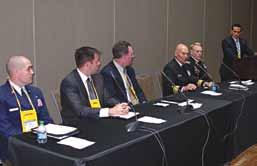
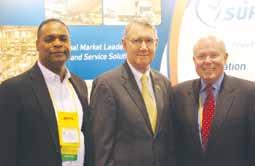
How do independent contractors work? All employees including independent contractors will be considered SCA employees unless they are exempt under the Fair Labor Standards Act. There are limited exemptions for owner operators.
Criteria for owner operators/if you feel you are exempt? The burden is on the employer, most owner operators fall under the SCA.
Is there a conformance process? There is a process you can find on the website, bring the class you need.
If a driver is paid per mile how do you translate that to an hourly wage? It should correlate to what would have been paid hourly.
Do you have a formula for per mile versus hourly wage? It depends on the inspector, the burden is on the employer.
Is there a distinction between full time, part time or temporary employees? If an employee only works one hour, fringe benefits applies to that one hour.
Is there an exception where SCA doesn’t apply if an employee spends very little time on contract, for example with some subcontractors? If an employee works two hours on contract SCA would be considered applicable. If hours are divided, it must be documented, and then you can have only those hours worked on contract fall under the SCA. Professional service employees are exempt from SCA. Do carriers with owner operators who submit IRS 1099, still have to comply with the SCA? You must pay wages & fringe benefits, in many respects the owner-operators are treated just like employees.
What if you have a collective Bargaining Agreement? It should be submitted to USTRANSCOM, CBA would become part of WD.
Does the family medical leave act come into play? Yes, it would have to.
Will the prime contractor be required to keep records from subcontractors? Some subcontractors won’t release this info. The prime has the burden of showing that the subcontractors followed SCA rules.
If the subcontractor doesn’t supply records to the prime is the prime subject to fine? Yes, but not for record keeping violations. The burden is on prime, they are responsible for paying subcontract employees back wages. This will be determined by employees’ word, so prime contractors must make sure to get subcontractors who are in compliance and will provide records.
How do you separate employees of subcontractors? If there are 5000 employees but only 20 work on an SCA contract, how do you separate this out? Record keeping.
If we deal with 26,000 carriers, will the Department of Labor require us to keep track of 26,000 hourly wages etc.? Yes, keep records. In essence we have to change our payroll if we don’t currently pay hourly? Pretty much, but do it as you feel necessary, just remember investigators will conduct employee interviews. Anyone performing on a contract are subject to inspection. All subs will be inspected. If a subcontractor doesn’t receive a flow down of clauses, then the prime would be subjected to penalty. A subcontractor can’t comply with what it doesn’t know about.
If employer is mathematically consistent w/WD and fringe benefits, but has a conflict/problem with an inspector what rights do we have? You have a right for a second-level review with his or her immediate supervisor and on up the chain.
All WD’s are renewed yearly but surveys come out at different times per year. How do we keep track of changes in WD? Go to wdol.gov, which contains a section in which WDs are revised each week. WD will also change on anniversary date. If wages go up it is considered a new contract.
What about Bona Fide Collective Bargain Agreements? Forward it to USTRANSCOM that would be part of WD, so the contract could use CBA instead of SCA rules. Appeals may occur if the CBA is not negotiated in good faith, or if it differs greatly from SCA rules.
What if CBA is well less than SCA? If done in good faith it’s okay. If it’s less it’s less. It can be appealed. CBA would be incorporated into the contract.
Who do we forward CBA to at USTRANSCOM? CBA MUST be in effect prior to contract or it doesn’t count. During an appeal the CBA is in effect until proven otherwise by legal.
The overriding focus of this panel discussion was the mission of cost reduction within all segments of the DOD, and how to best maintain readiness for our troops with declining dollars. In addition, contending with the challenge of continuing to foster strong industry alliances while managing shrinking dollars throughout the government sector. COL Jorgenson offered the opening presentation from DLA’s perspective. The new defense strategy calls for a leaner force, as well as an increase in counter measures against violent extremism, increased intelligence, and increased technology. Strategy for achieving “10-in-5” (10% reduction in cost over 5 years) is to be smart buyers, improve process productivity, “clean out our attic,” delight our
24 | Defense Transportation Journal | Dece mber 2012 customers, and prove it. DLA is also considering reverse auctions and long term contracts as cost saving measures.
The purpose of DLA’s strategic network operations is to optimize global distribution, reduce costs, and implement these changes. The intent is to leverage existing resources and maintain readiness, as well as to foster a culture of judiciousness, while supporting the warf-
ighter, and remaining connected to DPO and industry.
Mr. Larson provided an overview of UPS and the capabilities that industry can supply to the DOD in order to accomplish it’s mission, including areas such as air, ground, freight, warehousing, distribution, NVOCC, and small package express. Challenges faced by military and industry alike include the coordination of solutions, getting timely information, creating an innovative environment, and meeting customer needs, especially the needs of those in harm’s way.
Mr. Pejrone provided a brief overview of his company, which included work in energy and power, industrial, air cargo, automotive and transportation, as well as aerospace and defense. He presented case studies concerning government management of spare parts, inventory control, and IT support which demonstrated overall cost reduction along with improved efficiencies.
BG John Michel spoke about enterprise efficiencies and improvement, with three key focus areas: process improvement, air optimization, and surface optimization. USTRANSCOM’s strategic planning effort includes more focus on both internal and external elements, and expectations. The planning will explore how money is being allocated against current need, and whether current staffing will meet current and future demands.
The enterprise readiness center faces a decline in funding, despite requirement to maintain sustainment and readiness status. Strategically, this can be accomplished by cultivating better partnerships, ensuring organic viability, preserving access to commercial lift within financial constraints, and developing a clear, concise, and relevant command transportation strategy. Into the future we will adapt by preserving readiness, achieving management excellence, aligning resources for success, and developing customer-focused individuals.
Moderator: Mike Williams, SES, Deputy to the Commander, SDDC
Panelists: Lisa Roberts, Deputy Deputy Assistant Secretary of Defense for Transportation Policy Michael Gonzales, Vice President, Denali Group Tim Helenthal, Vice President, Agency Development, Military, National Van Lines John Johnson, Chief, Quality Assurance Div., SDDC
This panel addressed the coming changes and challenges to personal property shipments. Mr. Williams briefly introduced the panelists before asking Ms. Roberts to begin the presentations. Ms. Roberts spoke about what the Department has been working on surrounding DOD personal property shipments. DOD HHG is a $2.2 billion program. Currently, the 151 personal property offices are in the process of being relocated to 17 regional hubs by 2016. Some benefits to this consolidation are standardization and the streamlining of operations. DOD is also moving towards utilizing electronic funds processing and transfers, which will allow payments to process within 72-hours. Changes are based on HHG Business Case Analysis completed in March 2012.
Mr. Helenthal continued the presentations by discussing driver shortages and the challenge this presents to those in the HHG industry. It is hard to find drivers with the skills needed to move personal property. These skills include being good at paperwork, loading smartly, customer service, and being business savvy.
Mr. Johnson said that moving forward the DOD is looking to get the changes into an easy-to-understand format. Fuel surcharges dominated much of the question and answer period, and it was clear that much more discussion was needed between carriers and the government on the subject.
Moderator: John Pinard, Mgr. Sales, Industrial Products, BNSF
Panelists: Ross Burnett, Director of Sales, CSX Transportation Aaron Evans, Sr. Business Manager-Government, Union Pacific Railroad James Holloway, Jr., Director of Marketing and Equipment, Paducah and Louisville Railway Gisele Landers-Smith, Account Manager, Norfolk Southern Corporation Sharon Reeves, Sr. Account Executive – Carload Business Unit, Kansas City Southern Railway
Mr. Pinard began by showing a great video from the American Association of Railroads (AAR). He then went on to explain that the railroads had collectively invested $480 billion in their infrastructure since deregulation occurred in 1980. Furthermore, he noted that building one mile of track costs $5.2 million.
Rail can be classified as both the old and the new frontier. It is a cost effective environmentally friendly, speedy way to get your cargo or unit from one place to another. Rail is intermodal serving all the major ports and military bases. It has point-to-point service which can be tracked 24/7 with updates hourly. It is fuel efficient, a ton of freight can go 469 miles on 1 gallon of fuel. Rail has better door-to-door service than any other form of transportation. There is no traffic gridlock or driver shortages with rail.
Rail provides more than just transportation. Rail technicians provide technical experience, loading, chain tie down, unchain and off load service, all with only one bill of lading. Rail can make use of the many government owned special cars built for transporting heavy equipment like the M88 or M1. Rail is the most cost effective, timely and environmentally friendly mode of transportation.
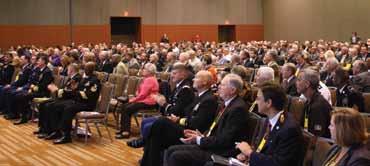

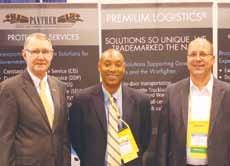
Mrs. Landers-Smith mentioned that coal constitutes 31% of that carrier’s revenue while intermodal, the fastest growing sector, makes up 19%. Mr. Evans also cited energy and intermodal as his firm’s largest commodities. Mr. Burnett’s view was that the industry is becoming increasingly customer and technology driven. Ms. Reeves added that fuel efficiency and environmental concerns were important to the industry as well.
The session was very consistent with the Forum theme of New Frontiers-New Opportunities, especially with regard to preparing as an industry for the anticipated growth in traffic that will come as the economy and global trade continue to recover. Technological advances in braking systems will allow the operation of larger trains, while new track and improved infrastructure maintenance will pay longterm dividends. Finally, the railroads will continue to improve their ability to meet required delivery dates (RDD), which Mr. Pinard cited in his closing remarks as one of the industry’s greatest problems.
Re -ba lance t o t he Pac if ic: Opp ortu n it ies and Cha llen ges Supp ort in g t he Nat ion ’s St rate gic Pivot
Moderator: COL Stan Wolosz, USA, Deputy Chief of Staff for Logistics, USARPAC
Panelists: Col James D. (Doug) Golden, USAF, Vice Commander, 515th Air Mobility Operations Wing LtCol Lyle A. Ferrara, USMC (Ret.), Strategic Mobility Branch, G4, US Marine Corps Forces, Pacific BG Paul C. Hurley, Jr., USA, Commanding General, 19th Expeditionary Sustainment Command CSM Kevin A. McKeller, USA, Command Sergeant Major, 599th Transportation Brigade
The opportunities and challenges supporting the Nation’s Strategic Pivot are based on the Obama administration’s decision to expand and intensify its already significant role in the Asia-Pacific region. The challenge of this session was to look at all possible options across the logistics enterprise. This includes lessons learned from past operations like OIF, OND and OEF and also looking at the way ahead. Panelists presented material covering each of the services.
The panel raised the question of how to cooperate across the enterprise. COL Wolosz ascertained that refocus may be a better description of what we do in strategic planning. Any challenges require critical choices with constrained resources. He continued that equipment prepositioning tion, an audience member asked when actual changes in troop support will be seen, panelists responded that small part implementation would occur within six months, with full force of 2500 still to be

& multiuse of niche items will assist in humanitarian assistance and disaster relief. BG Hurley shared that the Korean theater of operations can be a dangerous threat with a ship sinking, artillery attacks and satellite launching all happening since March 2010. The North Korean economy is in terrible shape and the new leader must prove himself to the people. They have WMDs and the means to deliver them.
According to Col Golden, the Air Mobility Ops Wing will focus on core competencies, multi modal options, facilities improvements and expansion, and maintenance reliability. Diego Garcia will be used for strategic positioning as there is no commercial air service.
Lt. Col Ferrara told the audience that aligning interests means combining training, partner interests and PACOM priorities. He also aptly stated that “readiness results from training which increases in complexity, but decreases in frequency.”
CSM McKeller stated that key tasks are to plan deployment, redeployment, sustainment, and humanitarian assistance/ disaster relief (HA/DR) support. Adding that, key support operations include: Balikatan (Philippines); PHIBLEX/Talon Vision (Philippines); Cobra Gold (Thailand); Key Resolve/UFG (S. Korea); Palau CAT (Palau); Project Partnership Kirbati); Northern Edge (Alaska); Talisman Saber (Australia); Pacific Reach (Japan) and Yudh Abhyas (India).
Moving forward, COL Wolosz felt partner nation engagement will ensure success, build capacity, and delay aggression. He also felt we must look at the past and find the NDN’s of the future in the Pacific.
During the question and answer pordetermined. Another audience member asked why we are using C-5’s, to which a panelist answered that we want them to be part of the plan, not sure yet of the right mix and the C-130 is also a force multiplier.
Ment orin g – A Joint Jun ior/Sen ior Ment or Dia logue
Moderator: Charlie Hermosa, Vice President, Business Development, Triple B Forwarders
Panelists: MG Roger Mathews, USA, Deputy Commander, USARPAC RADM Mark Buzby, USN, Commander, MSC Will Martin, Manager, Military Markets, APL John Myhre, Director, Government Services, Crowley Maritime SS gt Jason Eubanks, USAF, 437 APS
Opening day featured speakers MG Roger Mathews and RADM Mark Buzby who joined forces after lunch in the professional session “Mentoring –A Joint Junior/Senior Mentor Dialogue.” This session was a new approach to the A-35 Committee’s regular “In the AOR with our Young Leaders” Session, providing viewpoints from current leaders and rising junior leaders in a panel discussion on mentoring. MG Mathews and RADM Buzby were joined by junior leaders John Myhre and SSgt Jason Eubanks. In addition, Will Martin represented the opinion of someone who is mid-career. Panel Moderator Charlie Hermosa, introduced the panelists, who then engaged the audience in a lively dis-
cussion about mentorship at the early and latter stages of one’s career.
MG Mathews led off by sharing that to him, good leadership is always required when mentoring. He was a high school dropout with a 1.6 GPA, but a mentor gave him guidance to last throughout his life. Now as he takes the senior mentor role, he encourages those about to step in those shoes to select a mentee who is not just like them. Often, MG Mathews has found it is the person in the office who is marginalized that steps up and becomes a leader when mentored.
RADM Buzby finds mentoring is an opportunity to talk with someone outside your chain of command. RADM Buzby aptly summed up why mentoring is so important by saying “I was once told, ‘what you give away in life, you get to keep; what you keep, is lost forever.’” Having had great mentors in his life, he now enjoys telling them, “Something you taught me has led me to where I am today.”
Often, MG Mathews has found it is the person in the office who is marginalized that steps up and becomes a leader when mentored.
Will Martin shared that the value of networking—having the opportunity to meet senior leaders in arenas like the forum—has helped him in his career. He added that “we’ve got to keep young people stimulated and involved or they’ll go somewhere else.”
The panel’s junior leaders talked about the need for mentorship to be a two-way street, and the need for both the mentor and mentee to have expectations from each other and clearly explain them, so that both may benefit from the experience. “You’ve got to give and show respect to get it back,” SSgt Eubanks said. “I’ve had so many mentors, it’s hard to pick one.” Mr. Hermosa asked the panel about a technology gap between what senior leaders think and junior leaders know, sparking a lively debate over the merits of social media between the panel and audience members. “I acknowledge the benefit of Facebook,” said Admiral Buzby, whose civilian and military mariners have met with “vibrancy of communication” on the command’s Facebook page. “The technology tools are helping move the dialogue more quickly,” he said.
The question for the group swiftly became, “Is mentoring possible through social media?” While audience members could cite examples where advice has been shared and answers found more rapidly online, most in the room seemed to agree that a one-on-one mentorship occurs over years and with personal attention. General Mathews pointed out that when a mentee has a spark, the mentor can see it and help them grow. Mr. Hermosa closed the session by encouraging participants to belong to a program like the NDTA A-35 Program. “It’s a matter of going out there and finding it; it won’t come to you,” he said. Above all, Mr. Hermosa stressed that beyond the Forum week, attendees need to continue to close the gap between the younger and older generation of leaders, so that young leaders will be prepared to fill the shoes of those who came before them. “We can’t lose the art of mentoring,” he said.
NDTA Chapte r Be st Pract ice s
Moderator: Jeff Campbell, Manager, Chapter & Membership Support, NDTA
Panelists: Bob Sherrill, NDTA Pacific NW Region & North Pole Chapter President Joe Escalera, NDTA Regimental (Peninsula) Chapter President & Recruiter of the Year Ryan Garcia, San Antonio Chapter A-35er
For the first time, this year NDTA tried a Chapter Best Practices Session, aimed at members who are unable to make the weekend Member Workshop, and/or those who attended the Saturday workshop, but would like to go into more detail on an area affecting their chapter. This session featured an NDTA all-star panel, featuring North Pole Chapter President Bob Sherrill, who led efforts to grow the chapter from Category I (under 100 members) to Category II (101-250 members) over the past year; Joe Escalera, multiple individual recruiting drive winner; and Ryan Garcia, a new member who’s brought fresh ideas to the San Antonio Chapter, which has won chapter A-35 honors multiple times.
Mr. Sherrill spoke on core ideas and the importance of community involvement. He recommended that chapters that do not have a military base nearby find related civilian companies that will help the chapter and show them the value NDTA provides. Mr. Sherrill also explained a strategy for having luncheon speakers. This includes matching up with tours, trying to keep a backlog (plan a year out), check who will be visiting the area, and think out of the box on what may be of interest.
Mr. Garcia spoke on what it takes to make an A-35 program successful: get the A-35ers involved in everything the chapter does, open to change for nonA-35, listen to ideas from both industry and government. The best practice that worked for his chapter to get more people involved is having their scholarship committee reach out to high schools.
Mr. Escalera spoke on recruitment ideas. He discussed industry challenges, lunch and learn, case studies for students, WIFM (what’s in it for me).
Attendees took a some great tips home with them: when giving an application to a potential member, be sure your name’s in the “sponsor” line to get credit; disaster prep and community service events
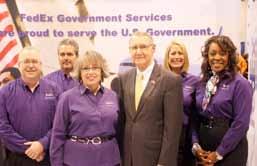

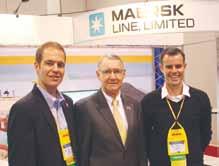
stand out when submitting for a chapter award in addition to regular meetings; and nominating your chapter or an individual member for an award is easier than ever, and one of the best ways to recognize your team.
Chapter growth, A-35 programs and recruiting were the focus of this year’s chapter session; let us know what topics you’d like covered next year, or if the format should be changed. We’re here to help your chapters thrive!
AA&E, Ha zmat Safet y, Secu rit y, & Ba se Acce ss – Ra il & Highwa y Ru les & Re gulat ion s
Moderator: Mr. Melvin Holland, Director, Strategic Business (G9), SDDC
Panelists: Marc Boyle, President & CEO, Boyle Transportation, and Chairman, NDTA Security and Safety Subcommittee Lloyd Coleman, Special Agent, Federal Motor Carriage Safety Administration (FMCSA), DOT CE Radford, SDDC Chief of Domestic Business
The panel discussion focused on DOD, DOT, and commercial regulations, procedures, and initiatives aimed at improving the safe and secure movement of Arms, Ammunition, and Explosives (AA&E), and other hazardous materials (HAZMAT), as well as protective security and sensitive cargo along US roads and railways.
Panelists explained some of the transportation security and safety programs currently in place. New innovations in tracking shipments and electronic logging of drivers’ activities via computers linked
Secure holds were another topic the panelists covered, relaying the importance of having areas across the US deemed to be “safe havens” for sensitive cargo should an attack or natural disaster occur.
to the odometer and hour meter on trucks and equipment are being utilized more frequently. However, the ability to modernize the fleet when the current focus is on saving the government money is a significant challenge. Installation access remains a hot topic for carriers and is one that the government continues to work through. Secure holds were another topic the panelists covered, relaying the importance of having areas across the US deemed to be “safe havens” for sensitive cargo should an attack or natural disaster occur. The panel commented on Hours of Service (HOS). Finally, the panel discussed Compliance, Safety, Accountability (CSA).
Inte rnat iona l Opp ortun it ies – Af rica , Asia , Lat in Ame rica , Ea ste rn Europe
Moderator: Brian Roberts, Senior Director, Government Services, DAMCO
Panelists: Jim Solares, Manager Worldwide Sales, FedEx Gov’t Services/DoD Gregory Diven, Managing Director of Enterprise Accounts, Gov’t Defense Sector Ambassador Egidijus Meilunas, Vice Minister of Foreign Affairs, Lithuanian Embassy Stefanie Dobbert, Key Account Mgr., DB Schenker
The panel focused on the commercial realities in the Asia/Pacific region, Eastern Europe, Africa, and Latin America. Mr. Diven began by saying that the pivot to Asia is driven by the economic and strategic importance of the region. Firms simply must have a presence in Asia. With regard to Eastern Europe, Mr. Zimmer commented that the area is very fragmented logistics-wise. In addition to anchoring the northern-most part of the Northern Distribution Network, Lithuania is adopting a key role in thru-rail connections to China and the Middle East. Countries such as the Ukraine and Azerbaijan, however, suffer from a general lack of logistics resources and expertise.
Mr. Solares then discussed Latin America, highlighting the unprecedented economic growth in the region over the past five years. The area is becoming more stable politically and contains two of the fastest growing economies in the world: Brazil and Mexico. However, logistics challenges still can be daunting, especially with respect to customs clearance/regulatory issues and infrastructure. The former tend to vary significantly from country to country, while urban traffic, security, and generally poor road networks, can prove especially disruptive to on-time customer deliveries. FedEx has embraced the use of partnerships with bestin-class local brokers and service providers to smooth the customs process, while forward stocking in locations such as Mexico City and Bogota help to maintain satisfied customers. Similar partnerships with local firms have helped deal with cargo security problems, which continue to be rampant in the region.
Regarding Africa, Mr. Roberts said the region is driven by the demand for its raw materials, i.e. export. As a result, the infrastructure primarily connects mines with ports rather than supporting the movement of goods within a given country. Interestingly, 1/3 of the nations in Africa are landlocked. There are several large rail projects being planned, but these are also intended to facilitate raw material export. Similarly, a road train system is being used in place of rail to transport ore from an inland mine to the port in Western Africa. The reality in Africa is that most logistics tasks are still done largely by hand.
Undoubtedly, the logistics capabilities in these regions will become more modernized in the future. However, for the short-to-medium term, firms will have to determine ways to work with these deficiencies much like FedEx has done in Latin America, if they hope to succeed in developing markets. An interesting analytical tool, the Logistics Performance Index (LPI), is published by the World Bank and is available on the NDTA website. The LPI rates each country on the quality of its logistics resources. For example, the LPI for African nations is mostly below average, with a few at the average level, and almost none above average.
Le vera gin g Bu sine ss Data & Inte l f or Logist ics Eff icienc ies
Moderator: Rob Armstrong, Director, Data Warehousing, Teradata Corporation
Panelists: Jeff Elder, Director, Marketing and Alliance Sales Development, Delta Air Lines Joe Cash, Engineer, FedEx Express
Mr. Armstrong opened the session by saying that we all look at reports, data, and information to try to gain insights. He continued by describing a client whose philosophy was: if you aren’t going to make a decision with
the data, don’t ask the question; if you aren’t going to take an action, don’t bother making a decision; and if you aren’t going to measure a result, don’t bother to take the action. What this means is not to waste time on unnecessary information. If you have data, but do not use it for anything, it is essentially worthless. What is essential is taking the insights gained and leveraging it into an actionable sense.
Mr. Cash explained that data warehousing helped FedEx organize, analyze, and secure its data, including allowing it to provide real-time tracking of packages and historical trends. The move to this system forced FedEx to think more about outcomes, as opposed to individual processes. FedEx measures a huge amount of data which they leverage into performance metrics that will help the company and employees improve quality of service.
Mr. Elder reiterated that data available is getting larger and larger. Managing data comes down to compatibility and properly assessing data before using it to make decisions. Delta must be not just manipulating data, but being able to pull from that what the individual customers want to optimize its forecasting.
New Front iers – New Opp ortun it ies – Air Ships
Moderator: Gen. William Tuttle, USA (Ret.), Consultant
Panelists: LTG Robert T. Dail, USA (Ret.), President, Supreme Group, USA Col Edward Kaharik, III , Hybrid Air Ships Program, USTRANSCOM Mr. Ray Riutta, Executive Director, Alaska Seafood Marketing Institute
The Panel began by covering the current status of USTRANSCOM’s Hybrid Air Ships program and its relationships and technology investments with Industry. Col Kaharik said that USTRANSCOM began investigating Hybrid Air Ships in 2010 and was studying 20 ton and 50 ton variants. (As a comparison, a C130 can handle 20 tons, while a C17 moves 45 tons.) He identified cost, maintenance, buoyancy, and ground-handling equipment as the biggest challenges, not to mention weather and survivability.
Moderator: Gail Jorgenson, Dir., Acquisition, USTRANSCOM AQ
Panelists: Brig Gen John Michel, Deputy Director, USTRANSCOM Strategy, Policy, Programs & Logistics, J5/4 Tammy Thouvenot, Acting Deputy, Acquisition Business Operations, USTRANSCOM AQ Mike Williams, SES, Deputy to the Commander, SDDC Brig Gen Scott Goodwin, USAF, AMC/A3

LTG Dail then spoke about commercial applications in the third world, where such a machine could replace long-distance trucking over primitive road networks. He highlighted Mongolia as an example of a land-locked nation that is far from anywhere. Hybrid Air Ships could connect ports around Asia with Mongolia by air.
Similarly, Mr. Riutta commented that the industry catches 5 billion pounds of seafood a year which is mainly transported by sea because many fishing communities are not on the road system. Hybrid Air Ships could make air transport to market a viable possibility. From a military standpoint, modern design technology allows these new airships to land and take-off vertically as opposed to horizontally (as in the past), which will allow them to access places with (for whatever reason) limited approach access.
The ability to move goods faster than surface, but more inexpensively than air, is a very attractive notion. This presentation fit perfectly with the theme of the Forum; association members can keep up-to-date as development progresses through NDTA media outlets.
The clear theme of this session was that everyone must be prepared for budget cuts and to evaluate how to make this transition work. As we head toward the fiscal cliff, it will take a coordinated effort by everyone at USTRANSCOM AQ to find efficiencies in all aspects of the procurement efforts. This includes the need to learn more from Industry about broadened capabilities and continued multimodal efforts. It will not be easy to find better value at lower costs, but cost reductions must be taken into greater consideration in contracting. Ms. Jorgenson summed it up by saying that we must learn to do more without more. BG Goodwin told the audience that readiness and maintaining a viable fleet are primary responsibilities at all times. He added that CRAF is just as critical as the organic system, we need to know how to structure it for the future and how to find the right balance. Mr. Williams explained that except for rail cars –everything else we move is via commercial. In discussing the future, Mr. Williams said that everyone is asking questions about change—what do we have, where is it and why is it there? SDDC’s focus will be on both effectiveness and efficiency.
According to BG Michel USTRANSCOM established an Enterprise Readiness Center to manage and better understand people, processes and culture.
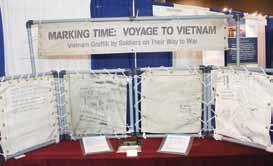

Ms. Thouvenot discussed the establishment of a Corporate Executive Acquisition Board, with quarterly reviews with reps from all modes; AQ Industry specialist established in TCAQ to better understand how Industry works; pre solicitation conferences and Industry days to better understand Industry capabilities.
The Next Great Front ier: Cyberspace & Secu rin g Your “Bit s & Byte s”
Moderator: Brig Gen. Gregory Touhill, USAF, Director, C4 Systems, USTRANSCOM TCJ6
Panelists: Jerry Cochran, Principal Cybersecurity Architect, Microsoft CAPT Daryl Hancock, USN, Director of Intelligence, USTRANSCOM Michael Evanoff, Geospacial Engineer, Google Dave Bosko, Liaison to USTRANSCOM, USCYBERCOM Peter Trahon, Section Chief, FBI
Cyber security is important to national security as we protect ourselves from adversaries who may desire to learn the movement of our American military and companies protect against corporate espionage. The panel’s focus was to identify the threat environment, to discuss ways to protect against these threats, and to identify assets or resources that are available to companies. From a military perspective, cyber security is an operational concern, it is sensi
Cyber security is a partnership, we must all think defense in depth—it’s not just about the technology, it is about training your people, having a culture of security and awareness, as well as having procedures and policies in place.
tive, but sharing information is necessary so risk management is necessary. From a risk standpoint information is “need to know”.
Of industry, USTRANCOM expects companies to take reasonable measures, based on industry standards, to protect information. Industry must consider itself custodian of certain information which may play a role in protecting the lives of American military members. Mr. Evanoff discussed the difference between government/military versus commercial models of security. With the sharing of best practices, the two are evolving to have more similar security networks. Partnership and maintaining a constant dialogue are key to safeguarding information.
As we identify emerging threats, we must look at who is a threat, determine what they are trying to do, and run any incidents through channels. The cyber world is a scary place, to help your company you should practice good “cyber hygiene.” This includes: making sure you patch your applications, that your operating systems are up-to-date, minimizing people with admin rights to your systems, and doing an application whitelist. If you feel you have possibly been victim of cyber theft there are a variety of commercial and government organizations who can help you. Cyber security is a partnership, we must all think defense in depth—it’s not just about the technology, it is about training your people, having a culture of security and awareness, as well as having procedures and policies in place.
How t o d o Bu sine ss wit h t he Government (GS A, DLA, USTRANSCOM)
Moderator: MG James Chambers, USA (Ret.), Executive Vice President, McLane Advanced Technologies
Panelists: COL Craig Jorgenson, USA, Joint Logistics Operations Center, DLA Scott Kidd, Chief, Freight Management Branch, GSA Nicholas Weiss, Director, Office of Small Business Programs, USTRANSCOM
The overall focus on the panel discussion was to provide an update on where each organization was positioned relative to requirements and compliance procedures for industry partnering. The impact of the current fiscal environment in doing business with these organizations was a key component verbalized by each speaker.
The elements of compliance and meeting specific criteria to do business with the government was the main point of MG Chambers presentation. He emphasized the most common requirements for commercial business centered on areas such as audit preparedness, the ability to demonstrate necessary certifications upon request, training, fluency in the “language” of the government entities, and peer-to-peer relations crucial to fostering a strong partnering environment.

Col Jorgenson highlighted the current and projected veil of fiscal belt tightening throughout all government enterprises. He noted many areas in which the DLA has provided, and will continue to play an active role in supporting our troops, including foreign military sales, FEMA support, fuel, subsistence, construction material, documents, etc. The PTAP Program, based in Philadelphia, PA, offers commercial businesses support in areas such as Contracting, FAR assistance, PreAward, Post-Award support. There is a Reverse Auction for online bidding from suppliers based on the item cost from last purchase (similar to eBay bids).
Scott Kidd brought the audience up-tospeed on the GSA schedules, including: schedule 48 for transportation services, 599 for Travel Services and 875 for Logistics consulting services. These schedules are open and posted in FEDBIZZOPS. GSA wants the highest discount available to its users and all schedule holders can be contacted for possible sales. GSA has 2300 TSP’S and over 800 active users. GSA is the only agency that can negotiate for other civilian agencies. The express carriers in DOMEX and WWX have used over $300M in express services.
Mr. Weiss highlighted several components of the USTRANSCOM Small Business program: the Office of Small Business Programs is designed to foster Small Business participation; moving forward price will be the key selection component in contracting, with lesser emphasis on historical experience; factors are weighed differently depending on the nature of the contract; information is available through his office on www.FEDBIZOPS.com.
Moderator: COL David Pollard, USA, Assistant Chief of Staff, Reserve Affairs, SDDC
Panelists: COL Larry McColpin, USA, US Army Combined Arms Support Command Chief of Reserve Affairs Erin Thede, Director, Employer Partnership Office, Office of Army Reserve MAJ Tim Christensen, USAR, Team Chief, Afghanistan Rail Assessment Team Margaret Downey, General Manager, Learning Development & Strategy, Railroad Education, CSX Transportation
The Army Reserve is using a five man team of RR specialists in Afghanistan to build its Railroad and train their people in all facets of running a freight RR. This aids the Afghan economy and insures that when the time comes to exit, the Army will have a safe cost effective form of transportation for their cargo. The Employer Partnership Office offers to send reservists and vets, on orders, to RR Companies to be trained. The companies get to train them the way they want, and benefit from free labor during the training period, in addition they rceive first choice of the best of the trainees. In return, the vets/reservists get a valuable skill set. The Army gets trained railroaders, who can be deployed to any place in the world to help with RR infrastructure. Increasingly rail is going to be the freight transportation of the future, especially in emerging markets. Our Army Reservist Railroaders are on the cutting edge of this new frontier. For information on hiring a reservist contact HireNow@ employerpartnership.org. For Soldier inquiries contact GetHired@employerpartnership.org.
As a part of the Forum professional program, attendees had the option of signing up to tour the UPS Anchorage Gateway, located on the great circle route that is the shortest distance from North America to Asia. NDTA members tried flying a cargo plane in the same simulator UPS pilots train on annually, learned about the active RFID used in delivery trucks for efficiency, and experienced a close-up look at the cockpit and cargo of a plane just before it took off from Ted Stevens Anchorage International Airport.
Two simulators are staffed 24-hours a day for pilot training in a converted hangar at the south end of the airport. The B747-400F Simulator costs approximately $18 million and $400 an hour to run. Tour participants tried out the state-of-the-art MD-11 simulator in UPS’ Anchorage Flight Training Facility, which also includes training classrooms, offices, and support facilities to provide the necessary long-range international lift for UPS to maintain its global reach.
Following the realistic-feeling flights, members stepped into a classroom for a short presentation on efficiency upgrades in UPS deliveries. Packages used to be tracked with just a bar code, which only provided the tracking number and wouldn’t read with part of the code lost. Now with QR codes, more information about the package is available and the code can still be read when up to 40% is missing. Vehicle sensors have also helped improve safety, showing seat belt usage and truck backing events.
Finally, participants grabbed reflective vests and ear plugs before walking through customs and across the flight line to see the real deal. Here, cargo planes are turned around—workers consolidate and refuel the planes—in just one hour and 20 minutes at UPS Anchorage Gateway, a 24/7 operation with eight UPS delivery centers. Open since the fall of 2008, the UPS Anchorage Gateway hub plays a critical role in UPS’ success as a top six global forwarder, delivering 16 million packages a day.



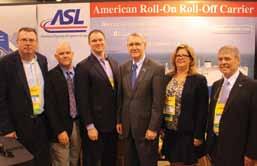
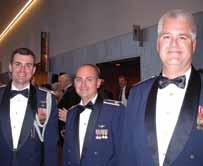
NDTA’s Action-35ers found themselves very active during this year’s Forum as they honored the committee’s founder and mentor of 40 years, welcomed the A-35 Executive Council to its first Forum, continued time-honored traditions and built new ones.
The fun began on the first evening of the Forum, at a local restaurant in downtown Anchorage, where A-35ers kicked off the Third Annual Young Professionals Social. There, logisticians met up before sampling Saturday nightlife in Anchorage. The crowd included chapter members from Regimental, Scott-St. Louis, and Washington, DC to name a few; exhibitors from as far away as Afghanistan; and a special visit from a Forum Co-Moderator. Monday morning, the mentorship began at the A-35 Breakfast and Annual Meeting. New members got to know more about the program and the special duties A-35ers volunteer for during the Forum, including selling ducks and escorting VIPs at the Chairman’s Awards Dinner. This was an extra special meeting, as members learned how the program got its start, from COL Denny Edwards, USA (Ret.), NDTA Vice President of Marketing and Corporate Development, who in 1972 (then CPT Edwards) became the most junior officer to win the DOD Distinguished Service Award for founding the program. NDTA A-35 Chair Lori Leffler recognized COL Edwards with an award for his vision and dedication to NDTA’s junior leaders. COL Edwards is retiring from NDTA this year,
but the NDTA Headquarters will continue to have an A-35 Liaison, in addition to the A-35 Executive Council (established this Spring), to carry on the committee’s traditions for another 40 years!
On Monday afternoon, the A-35 Professional Session tried a new look, with a panel comprised of both junior and senior leaders for a vibrant discussion on mentorship. The committee was grateful that two of the Forum’s featured speakers, RADM Mark Buzby, USN, Commander, Military Sealift Command, and MG Roger Mathews, USA, Deputy Commander, USARPAC, were able to share their insights with the group. Following the Junior/Senior Mentor Dialogue, the NDTA Chapter Best Practices session included an A-35 panel member who shared what it takes to have a strong A-35 program at the chapter level. Early Tuesday morning, volunteers and athletes found their way downhill to the coast, where NDTA held its third Annual A-35 Scholarship 5K. The run/walk began at 0630 on the Tony Knowles Coastal Trail and was sponsored by Echo Global Logistics. The rain held out and the temperature remained just above freezing, but the sun had not risen by the start time, so thanks are due to Landstar and UTi for their flashlight donations. Craig Hymes of Supreme Group won his 2nd Forum 5K and 3rd consecutive A-35 5K, to include the one held during the SDDC Symposium in March. His time of 17:03 is a new A-35 5K record, passing US Navy LT Andrew Krantz’ 17:09 finish at the first 5K during the 2010 Forum in Washington, DC. In Olympic fashion, silver and bronze medals were awarded to second and third place, along with gold medals for the top female and top A-35er. A spotlight shone on the opportunity NDTA’s young logistics professionals have to meet senior leaders as A-35ers escorted VIPs to their tables that evening at the Chairman’s Awards Dinner. After dinner, the A-35ers saw their hard work selling ducks pay off, as they dropped 1500 rubber ducks down to a bulls-eye. Each duck is sponsored by an attendee for a chance to win a sponsored prize with all proceeds going to the NDTA Scholarship Fund.
During the International Awards Luncheon on the Forum’s final day, LTG Ken Wykle, USA (Ret.), awarded Lori Leffler, the A-35 Committee Chairperson and Hertz Global Government Strategic Manager, the NDTA President’s Special Achievement Award for 10 years of dedication to the A-35 Program. This year, Ms. Leffler’s contributions included a donation of 40,000 car rental vouchers to young troops returning from military service. She remained on stage and was joined by Echo Global Logistics VP, Sales, Scott Boyer, for a medal ceremony recognizing the top 5K finishers.
This year proved to be especially busy for NDTA’s A-35ers and there is only more to come for the committee’s next 40 years. Whether you are young, or just young at heart, there are always ways to volunteer to support this next generation of transporters and logisticians, get connected with the A-35 Program at www.ndtahq.com/A35.htm.
2012 Forum Attendee Official Survey Re sults
What is your primary reason for attending the Forum? Networking 52%; Professional Sessions 20%; Keynote/Featured Speakers 16%. Which TWO networking opportunities provide the greatest benefit to you? Expo Hall 73%; NDTA-FedEx Opening Reception (Sunday) 30%; NDTA-APL Chairman’s Awards Dinner/Reception 24%. How would you rate NDTA’s Pre-Forum/Forum information sharing? The following percentages represent ratings of very good or excellent: Individual Online Registration 90%; Exhibitor/Sponsor Online Registration 92%; Online Exhibitor Service Kit 86%; Forum DTJ 84%; Forum Daily Newspaper 88%; Forum Welcome Gram 85%; NDTA Connect 66%; NDTA Global Match 63%; Pre-Forum Email Blasts 81%; On-site Email Blasts 75%; Social Media (Facebook/Linked-in/Twitter) 61%. Which TWO Speakers did you find most informative? The top three picks were: Hon. Alan Estevez 51%; General Fraser 45%; General Johns 35%. Which TWO NDTA Forum Professional Sessions did you find most valuable? Top three selections: How to do Business with the Gov’t 30%; The Service Contract Act – Implications for Government Contractors 24%; Future AQ 21%. Complete video presentations of Forum Featured Speaker Remarks are available when logged in at www.ndtahq.com. Were you aware these videos are available to NDTA Members? Yes 47%; Yes – and will share 18%; No 35%. Do you plan to attend the 67th Annual NDTA Forum, September 7-11, 2013 in San Antonio, Texas? Yes – Individual 47%; Yes – Exhibit & Sponsor 27%; Yes – Exhibit ONLY 9%; Yes – Sponsor ONLY 7%; No – Individual 9%; No – Exhibitor or Sponsor 3%. Additional survey feedback and miscellaneous comments, including responses from NDTA President, LTG Ken Wykle, are available online at www.ndtahq.com/forum.htm (last link on the right-hand side). If you did not get a chance to respond or have additional suggestions for next year’s Forum please email ken@ndtahq.com. Following the Forum each year a survey is sent out to attendees to solicit feedback. This feedback provides a basis for the NDTA staff to make improvements each year and to increase the value of the Forum for attendees. Thank you to those of you who took the time to respond!





